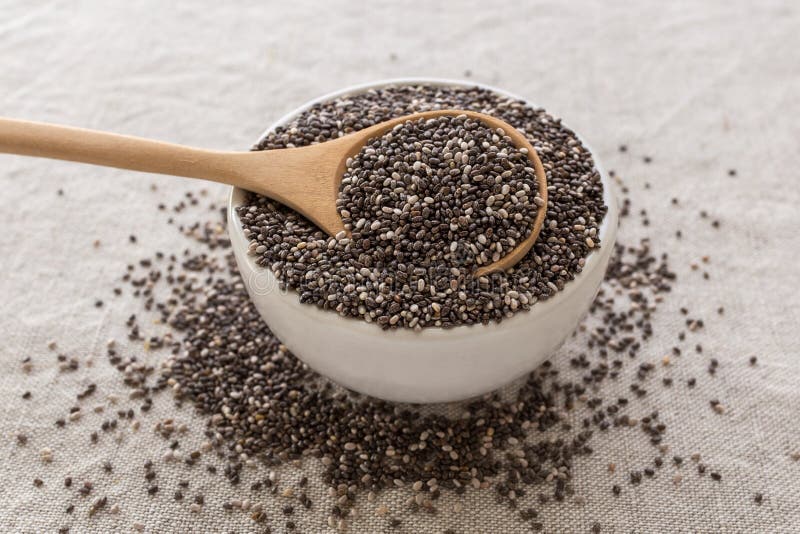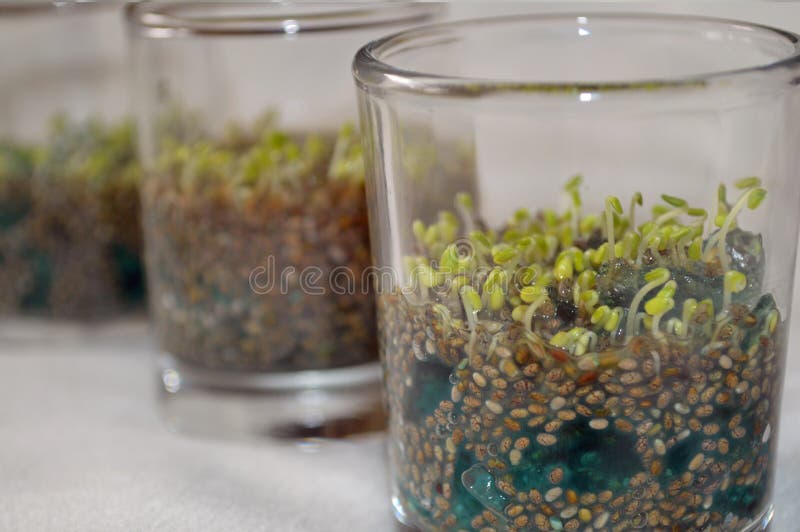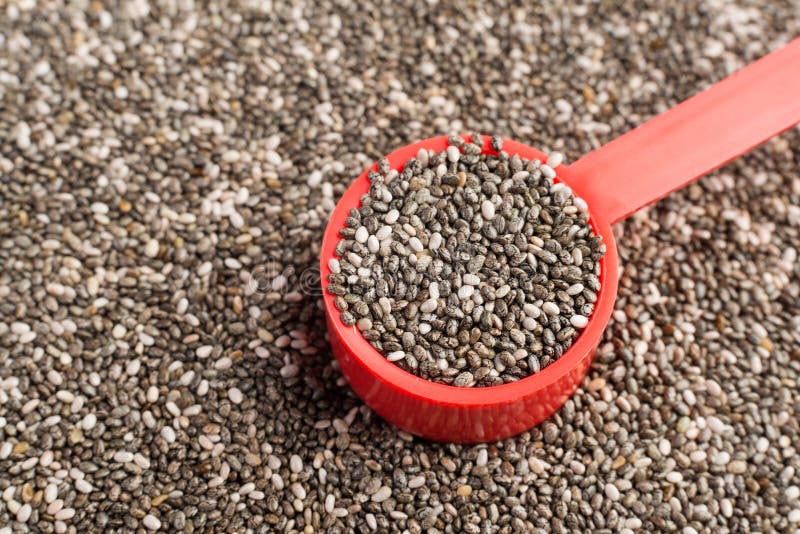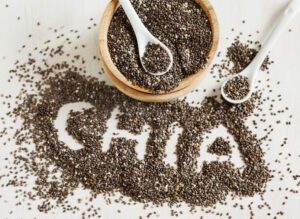Vegan Globetrotter is supported by our audience. When you purchase through one of our links, we may earn a small affiliate commission. As an Amazon Associate I earn from qualifying purchases. Your cost is not affected.
==================
Health Benefits of Chia Seeds
The health benefits of chia seeds extraordinary and they are becoming more popular as a gluten-free option. The grain is available in a variety of forms, including whole seed, oil, and flour. Because of its nutritious qualities, people include chia seeds in various food products, such as multigrain bread, cereals, and nutrition bars. In fact, these popular chia seeds take part as a “superfood” or a “functional food.” It has many nutrients that are equally important in providing health benefits
According to new studies, incorporating chia seeds in a healthy eating plan can help reduce heart risk factors, including cholesterol, triglycerides, and blood pressure. But, there are few published studies on the health advantages of eating chia seeds—much of what is available on animal studies or human studies with a limited number of individuals.
Chia seeds are vital in various healthful dishes, including protein bars, smoothies, and salad. The seeds are not only nutrient-dense, but they also provide texture and taste to meals. Moreover, they’ve become a favorite superfood among health-conscious people. They have a lengthy number of benefits. Chia seeds are remarkable in that they can absorb up to 12 times their weight in fluids. In addition, Chia seeds also form a creamy covering that gives them their distinctive gel feel.
Many nations produce chia. Including Guatemala, Mexico, Peru, Argentina, Australia, and the United States, now cultivate chia. In fact, the seeds are well-known for being a nutrient-dense complement to a balanced diet.

Where do chia seeds come from?
The Salvia hispanica and Salvia columbarriae are the two plants that are also known as chia.
Salvia hispanica is a blooming plant in the mint family. The leaves that are 1.6-3.1 inches long and 1.3-2 inches broad grow up to 5.7 feet tall. Chia plants produce many white or purple flowers clustered in spikes at the stem’s end. The plants are native to Central America, with Mexico and Guatemala. They have been planting chia seeds both in South and North America, such as the southwest United States and western Mexico. Furthermore, in the Aztec language of Nahuatl, chia means “oily.”
While the Aztecs used chia as a staple energy food dating back to 3,500 BC, it was also used by both warriors and relay runners to sustain long-distance runs from the center of Mexico (Tenochtitlan) to distant regions. Not only that they were to send and receive messages,but the group of runners would also run nonstop, carrying chia as their primary food to resist the trip.
Salvia columbarriae, often known as “golden chia,” is a perennial plant native to North America. Native Americans used the plant as a food source. You can find them in many states in the United States and Mexico. Including New Mexico, California, Utah, Nevada, Arizona, Baja California, and Sonora.
Furthermore, it was also popular among the Raramuris in the northern state of Chihuahua. Where natives drink “Iskiate,” a beverage made with ground corn and water. There are other refreshing versions made with chia, like lime juice and piloncillo. They became a staple drink when Spain invaded Latin America. The usage of chia became forbidden. As a result, even the plant became illegal to consume under the new regulations enacted as part of the new rules.
Health benefits of Chia Seeds
Chia seeds are delicious and simple to digest when cooked. Its extensive list of nutrients makes it one of the world’s healthiest seeds. In fact, according to preliminary studies, eating chia seeds has many health benefits.
There is no sign that eating chia seeds have any negative consequences. Also, there are numbers of health benefits of chia seeds which include encouraging digestive health, improving heart health, and increasing energy. Similarly, chia seeds are high in antioxidants, fiber, and healthy fats. All these of which help the heart operate. Furthermore, they assist in decreasing heart inflammation and the risk of various heart problems.
Chia seeds, among their many health benefits, can help you lose weight. Combining chia with a whole, healthy diet and exercise can help you better your health. Similarly, no definite research has shown that consuming chia seeds aids weight loss. They can contribute to a healthy lifestyle with few if any, risks.
-
Reduces free radicals
Chia seeds include antioxidants that can assist your body combat free radicals. Free radicals can cause oxidative stress and cell damage.
Antioxidant-rich foods can help lower your chance of developing various health problems linked to free radicals, including heart disease, cognitive loss, and some forms of cancer.
-
High in quality protein
Chia seeds are a very good source of protein. They contain around 14% protein by weight, which is relatively high when compared to other plants. They also have a mix of essential amino acids. Meaning your body should be able to use the protein they contain. Protein is the most friendly dietary nutrient, with several health advantages.
A high protein diet suppresses hunger and was helping diminish compulsive food thoughts by 60%. It also helps the urge for late-night snacking by 50%.
Chia seeds are a fantastic source of protein, especially for those who eat little or no animal products.
-
Aids in Weight loss
One of the health benefits of chia seed is that it aids with weight loss. Many health professionals feel that chia seeds might help people lose weight. Its soluble fiber absorbs a lot of water and expands in your stomach, which should make you feel full and slow down your digestion. Furthermore, the protein in chia seeds may aid in the reduction of hunger and food consumption.
Though chia seeds are unlikely to induce weight reduction on their own. Many experts feel they can be a beneficial supplement to a weight loss diet. A weight-loss diet entails more than one or two foods.
-
High in omega 3-fatty acids
Chia seeds have more omega-3s per gram than salmon. It’s essential to remember. The omega-3s in them are ALA (alpha-linolenic acid), which isn’t as healthy as you may assume. Before your body can utilize ALA, you should transform ALA into active forms. Like, EPA 9 (eicosapentaenoic acid) and DHA (docosahexaenoic acid).
-
Bone health
Chia seeds include many minerals that are beneficial to bone health. Calcium, phosphorus, magnesium, and protein are all part of this. The calcium level is especially noteworthy, with 18% of the RDI in only one ounce (28 grams). This is greater gram for gram than most dairy products. Chia seeds may be a good calcium supplement for those who do not consume dairy products. Not only that, Chia seeds also contain phytic acid, which inhibits calcium absorption to a degree.
-
Contains a lot of nutrients
According to the National Nutrient Database of the United States Department of Agriculture (USDA). A 28-gram (one-ounce) serving of chia seeds contains:
Calories: 131
Fat content: 8.4 g
Carbohydrate content: 13.07 grams
Fiber (11.2 grams)
Protein content: 5.6 grams
There will be no sweetness.
One ounce of chia seeds provides at least 18 percent of daily calcium. Twenty-seven percent of daily phosphorus. Thirty percent of daily manganese and lower quantities of potassium and copper.
Chia seeds have a higher concentration of omega-3 fatty acids, calcium, phosphorus, and fiber than flaxseeds. The majority of individuals do not get enough of these vital nutrients.
-
Full of fiber nutrients
Chia seeds include 12 grams of carbohydrates per ounce (28 grams). In fact, Fiber does not elevate blood sugar levels or need insulin, even though it is a carbohydrate. Its health effects are not the same as those of common digestible carbohydrates. Such as starch and sugar. Chia seeds may absorb up to 10–12 times their weight in water. Thus, they are becoming gel-like and swelling in your stomach because of their high soluble fiber content.
Fiber also nourishes the good bacteria in your bowel. This is significant since a healthy gut flora is essential for good health. Chia seeds have 40% fiber by weight, making them one of the finest fiber sources on the planet.
-
Lowers the risk of heart diseases
Inflammation, excess body fat and excessive blood pressure are all factors that contribute to heart disease. Studies show that chia seeds lower blood pressure, resulting in more excellent health—exercise, a healthy diet rich in fruits and vegetables, and lean meats. Also, ingesting chia seeds all contribute to a healthier you.
-
Helps you lower blood sugar levels
Chia seeds have a high fiber content. Fiber may help reduce insulin resistance and improve blood sugar levels. Lowering your risk of metabolic syndrome and type 2 diabetes, according to research. According to studies, chia seed bread has a lower blood sugar response than conventional bread, which helps to prevent excessive blood sugar levels.
-
Reduces inflammation
Although inflammation may be a real pain, eating more of these little seeds might help you combat it. Chia seeds’ omega-3 fatty acids have been demonstrated in new research to help decrease the symptoms of inflammation, digestive problems, and autoimmune illnesses.
Chronic inflammation has been linked to diseases such as heart disease and cancer. Caffeic acid, contained in chia seeds, is an antioxidant that can aid the body combat inflammation. Inflammatory indicators, which typically signal the existence of an inflammatory condition, may be reduced by eating chia seeds on a regular basis.
-
Convenient to add with your diet
Chia seeds are simple to include in your diet. Because the seeds themselves are pretty bland, you may use them in almost any recipe. They also don’t need grinding like flax seeds, making them easier to prepare.
You may also use them to garnish cereal, yogurt, veggies, and rice dishes. Chia seeds have various uses. They can be replacements as eggs in recipes, or they thicken sauces. This is because of their propensity to absorb both water and fat. By mixing them with water, they can turn into gels. Chia seeds can increase the nutritional value of different types of dishes.
-
Supports immune system function
In addition to the benefits of chia seeds, it also contain high omega-3 fatty acids, which help the immune system, including several types of T-cells and B-cells. Omega-3 fatty acids aid macrophage activity in innate immunity. Omega-3s aid the body’s disposal of damaged cells. They can also help immunity against infections by boosting macrophage phagocytic activity.
How do you use chia seeds?
-
Incorporating chia into your water
Sprinkling chia seeds into water is one of the easiest ways to include them in your diet. Similarly, you may also flavor your chia drink by adding chopped fruit or squeezing a lemon, lime, or orange.
-
Chia pudding
Consider adding chia seeds to your smoothie to make it even more healthy. You can use chia seeds in any type of smoothie as long as you soak them first to form a gel.
-
Adding chia to your salad
You can add some chia seeds on top of the salads to provide texture and nutrition. Combine them with your favorite salad veggies and serve.
-
Baked in cakes
Cakes often include a lot of fat and sugar. Chia seeds can assist them in improving their nutritional profiles by having them in your cake batter. You may increase the fiber, protein, and omega-3 content.
-
Oatmeals
Toss one tablespoon (15 grams) of whole or crushed seeds into your cooked oatmeal. It takes minimal effort to include chia seeds into oatmeal
-
Yogurt
If you want a little texture for your yogurt, leave them whole on top. Mix in ground seeds if you don’t want the crunch. Chia seeds make a delicious yogurt topping.
-
Thickener for burger patties
You can use chia seeds as a substitution for eggs or breadcrumbs to bind and thicken your meatballs and patties.
-
Tea
Chia seeds may be easily included in your diet by adding them to your hot tea. Add one teaspoon (5 grams) to your tea and steep for a few minutes. They may float at first, but they should sink in time.
-
Lemonade
You can also find chia seeds useful for your homemade lemonades, which is an unusual way to consume them. Soak 1.5 teaspoons (20 grams) of seeds for half an hour in 2 cups (480 ml) of cold water. Then, add one lemon juice and a sweetener of your choice.
-
Egg substitute
Soak one tablespoon (15 grams) of chia seeds in 3 tablespoons (45 ml) of water to replace one egg. If you don’t want to use eggs in your dishes, chia seeds are a great alternative.
Types of chia seeds
Chia comes from the plant ”Salvia hispanica”. But by the time it reaches your grocery store shelves, you can find them in a variety of forms, including powdered or milled chia, white chia, and hydrated chia.
-
Ground/milled chia
People sell milled chia seeds for the sole purpose of meeting people’s textural preferences. Using chia flour can also be a substitution for or combined with other types of flour.
The nutritional value of whole and milled chia seeds is the same. But for some people prefer a powder-like texture since mixing chia into liquids or meals vanishes. They mill chia seeds for wonderful and tasty smoothies. Sometimes for slipping chia into children’s meals.
-
White chia
Some chia seed manufacturers sell white chia seeds. They’re able to achieve this by extracting the few white seeds that dot the black naturally. They then plant these seeds, which result in white chia seed harvests.
In terms of nutrients, white seeds are equivalent to black seeds. Antioxidants are somewhat greater in black seeds.
-
Pre-hydrated chia
Chia seeds that have been pre-hydrated are available on the market. This indicates that the seeds have absorbed fluids. This is more common in beverages, puddings, and other meals. You can also use ready pre-hydrated chia seeds if you are in a rush.
Chia seeds table for nutrition
Chia seeds (28g) – Calories 137
| NUTRIENT | % DAILY VALUE |
| Dietary Fiber 10.6g | 42% |
| Protein 4.4g | 9% |
| Calcium 177mg | 18% |
| Phosphorus 265mg | 27% |
| Manganese 0.6mg | 30% |
| Omega-3 4915mg | n/a |
| Omega-6 1620mg | n/a |
Frequently asked questions about chia seeds:
How much chia seeds should I consume in a day?
Before starting any new health routine, speak with your doctor about making any significant dietary adjustments. It’s advisable to stick to the suggested serving size when adding chia seeds to your diet. Adults should consume 15 grams (2 teaspoons) each day. The recommended daily dosage for children and teenagers aged 5 to 18 years is 1.4 to 4.3 grams. For children under ten, a daily serving amount of no more than one tablespoon is enough.
Is it vegan and gluten-free?
Chia is the newest superfood to hit the market. It’s gluten-free, as well as substantial in omega-3 fatty acids, fiber, and antioxidants. It’s a fantastic addition to any diet for its nutritional advantages. But it’s beneficial as a binder and egg substitute in gluten-free and vegan baking.
Why does my stomach hurt after consuming chia?
Chia can induce stomach cramps, discomfort, gas, and even constipation. If you consumed in excess or if you do not have allergic reactions to it. This is because they are high in fiber and lectins. The chia seeds are also water-loving plants. It can absorb a large amount of water.
You should not consume dry chia. They might attach and clog your food canal and even your intestines.
Someone experienced this! Before eating, soak chia seeds for at least one hour in enough liquid to expand them.
Some people are allergic to chia seeds. After consuming them, they may have symptoms, such as gastrointestinal discomfort, itching, rashes, and swelling. Suppose you try chia seeds for the first time and develop any food allergy symptoms. Stop using them right once and visit your doctor.
Do I have to grind the seeds?
Nope! In its entire seed form, chia is entirely digestible. The insoluble fiber in the chia seed shell is suitable for your digestive health. If you’re not used to eating a lot of fiber, your digestion may take a while to adjust. You should soften the chia seeds by letting them gel in a bit of liquid before eating. Then start with a lesser amount until your stomach adjusts.
When is the best time to consume chia seeds?
In general, you can consume chia seeds at any time of the day. When is the ideal time to eat Chia seeds? It depends on why you’re eating them. For instance, you can eat them before an exercise or sports game, along with a bottle of water or sports drink, to keep hydrated longer. To hydrate the seeds, mix them into the liquid or eat a dry tablespoon and immediately drink water.
Eat the seeds in the morning or just before meals. Depending on if you want to reduce appetite, decrease weight, and enhance regularity.
What do chia seeds taste like?
Chia seeds have a mellow, nutty taste that goes well with sweet and savory meals alike. They have a very mild flavor, but some people compare them to poppy seeds or alfalfa sprouts.
The chia seed has a gritty and thick feel when appropriately cooked. In-gel form, the soaked chia seeds absorb moisture. It becomes soft, like tapioca pearls.
How do I store my chia seeds?
You can keep chia seeds for 4–5 years in a cool, dry environment. When storing chia seeds, cover them inside the refrigerator for up to a week after soaking. This process can help you make chia gel. Keep an eye out for the expiration dates on the chia seeds you buy.
Where can I buy chia?
Chia seeds may be found in the health food area, baking section, organic food aisle, mini organic stores, and the spice section of supermarket shops. They may also be found in the aisle with the rice and dry beans.
Can chia help me detox?
They also cleanse your insides by gathering toxins on their way out since they generate a gelatinous effect when added to water or eaten! In fact, chia seeds are an excellent detox and weight-loss meal because of this.
Does chia reduce belly fat?
Chia seeds are a wonderful addition to your diet since they improve digestive health, metabolic rate, iron content, Omega-3 content, and healthy fats. Most importantly, the small white and black seeds are excellent for weight loss and abdominal fat reduction.
Without a doubt, the benefits of chia seeds make them an important part of our diet
Yes, chia seeds offer some incredible health boosters. In fact, the benefits of chia seeds outshine many other types of seeds we routinely use. Yet, incredibly, they often cost less per serving than other options. Are you ready to try some great chia recipes?
Read More




Don't miss out
when new recipes and information are added!
Join our newsletter for free recipes,
healthy living inspiration, and special offers
You have Successfully Subscribed!